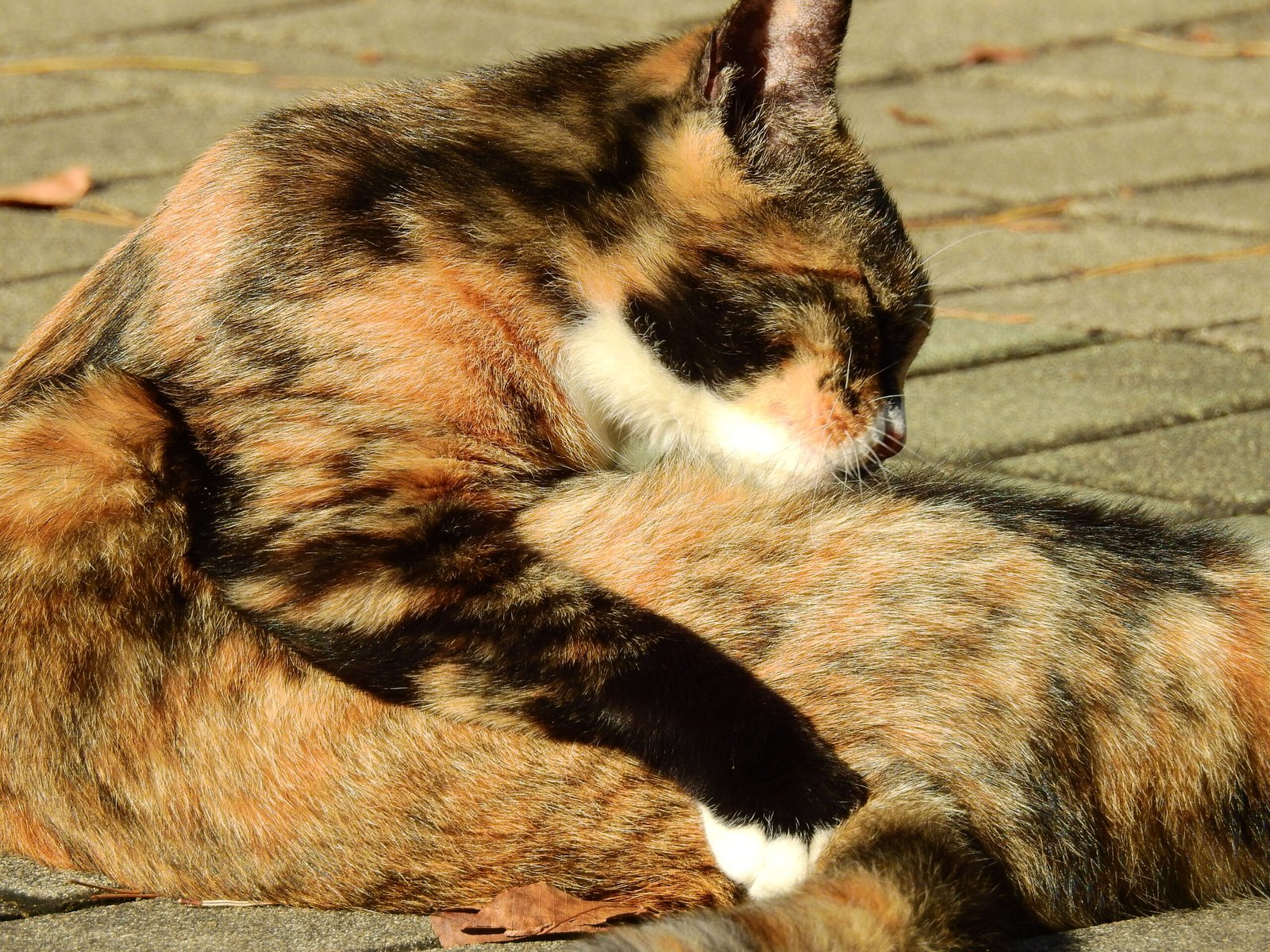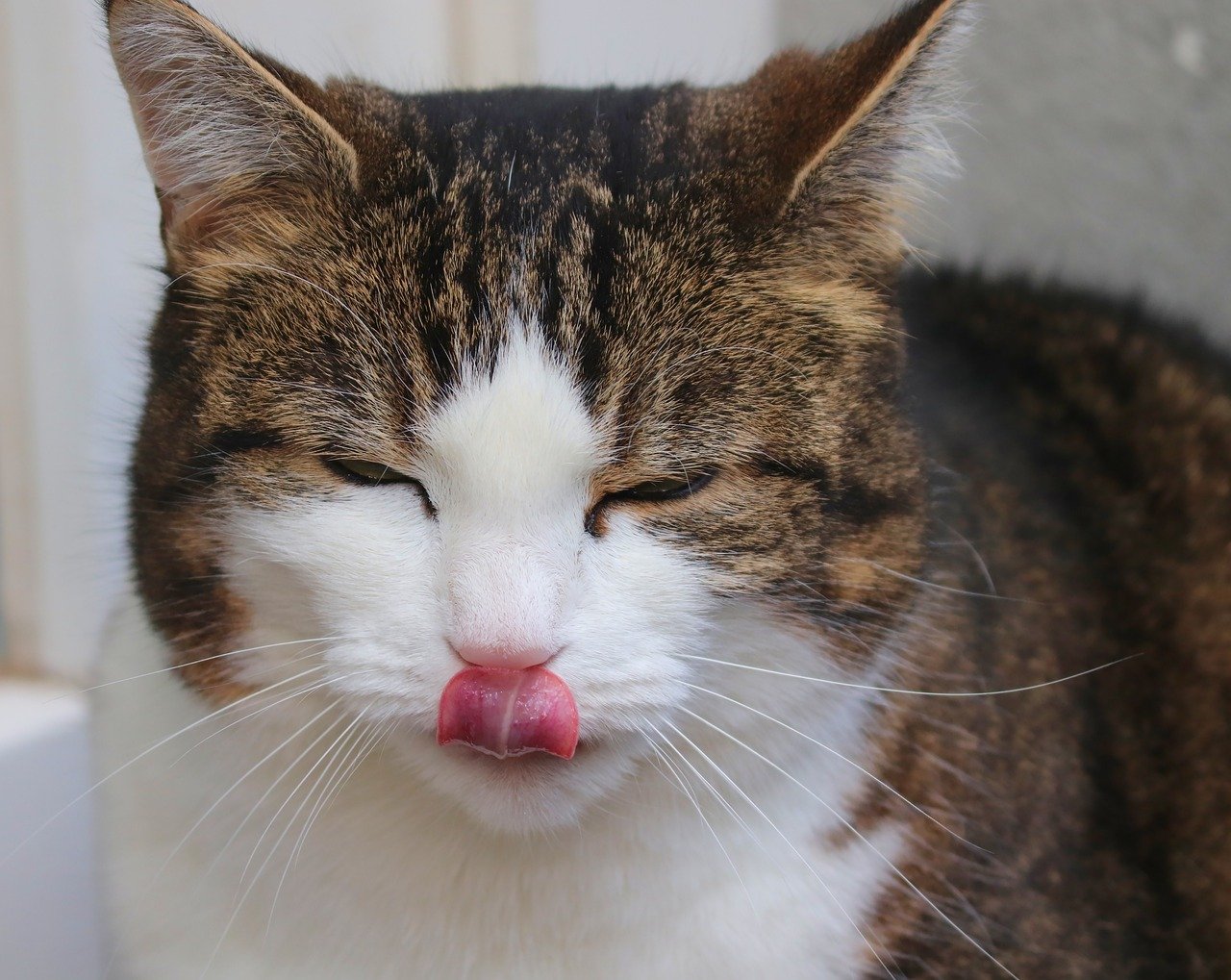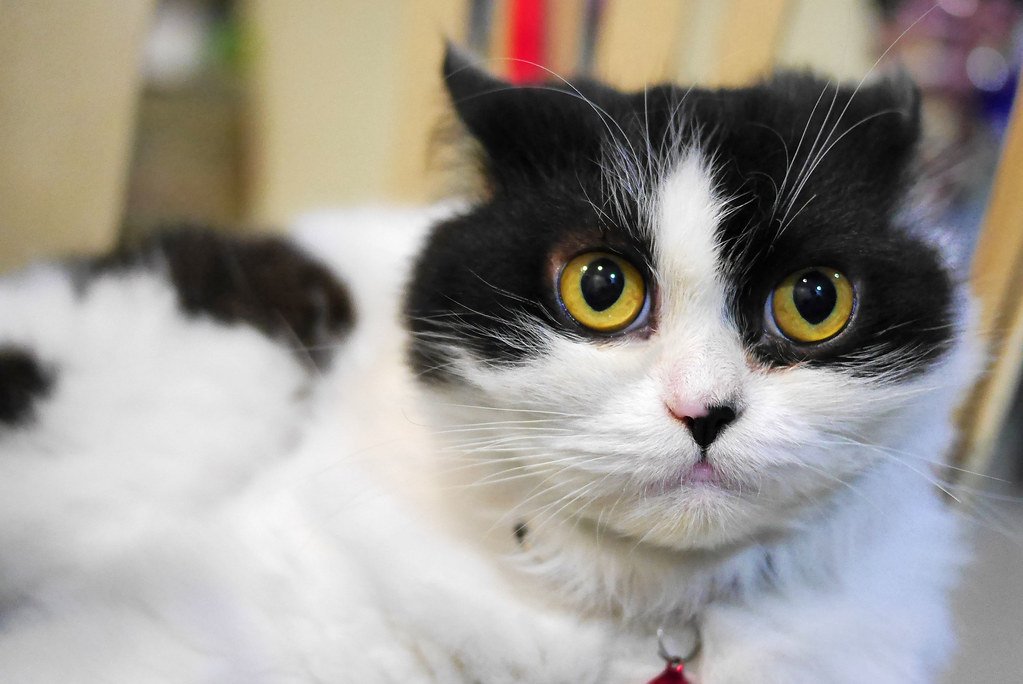Cats are masters at hiding their emotions, so spotting anxiety isn’t always easy. Many symptoms—like excessive grooming, hiding, or sudden aggression—can easily be mistaken for normal feline behavior. You might also notice changes in appetite, litter box avoidance, or constant meowing, which are often overlooked as signs of stress. Some anxious cats pace, freeze up in new situations, or become overly clingy. Even subtle shifts in body language—like a tightly curled tail or flattened ears—can reveal inner tension. These signs are your cat’s quiet way of saying something’s off. Recognizing them early can help you support your kitty’s emotional well-being before anxiety becomes a bigger issue.
Excessive Grooming or Fur Loss

Most cats love to keep themselves clean, but when you notice your cat licking or biting herself to the point of bald spots or raw skin, it’s time to pay attention. Over-grooming is a classic, yet frequently overlooked, sign of anxiety in cats. It’s almost as if your cat is trying to soothe herself, using repetitive grooming as a comfort blanket.
This compulsive behavior can lead to hair loss, red patches, and even open sores. If you catch your cat licking her belly, legs, or tail more than usual, especially when there’s no obvious skin issue, consider what might be causing her stress. Changes in the household, loud noises, or even new scents can trigger this anxious response. Think of it as the feline version of biting your nails—comforting in the moment, but harmful if it goes too far.
Hiding More Than Usual
Cats are naturally curious, often found perched in window sills or sprawled across the couch. But if your normally social cat starts disappearing for hours, hiding under beds or inside closets, anxiety could be the culprit. It’s easy to mistake this for independence or laziness, but it’s actually a survival instinct kicking in.
In the wild, cats hide to protect themselves from predators when they feel unsafe. In your home, frequent hiding might mean your cat is overwhelmed or scared. Maybe there’s a new pet, a baby, or even a change in your work schedule. When your cat withdraws, it’s her way of telling you she doesn’t feel safe or comfortable.
Increased Aggression or Irritability
Does your affectionate kitty suddenly hiss, swipe, or growl at you or other pets? This shift in temperament is more than just a “bad mood.” Anxiety can turn even the sweetest cat into a ball of claws and teeth. The world feels unpredictable to her, and lashing out is her way of regaining control.
Aggression can be directed at people, other animals, or even objects. Sometimes, it’s triggered by seemingly harmless things, like a new piece of furniture or an unfamiliar visitor. Rather than punishing your cat, try to pinpoint the source of her anxiety. Remember, aggression is often fear in disguise—your cat is telling you, “I’m scared!”
Changes in Appetite

A sudden loss of appetite or, conversely, overeating can both signal anxiety in cats. Food is a major source of comfort for many animals, and stress can disrupt this delicate balance. If your cat starts leaving food untouched or begging for snacks at odd hours, take note.
Anxious cats may associate mealtime with negative experiences, especially if something stressful happens in the kitchen or near their food bowl. On the other hand, some cats eat more as a way to self-soothe, much like humans reach for ice cream during tough times. Watch for any noticeable changes in eating habits, as these can be early warning signs that something’s amiss.
Unusual Vocalization
Has your cat started meowing, yowling, or crying more than usual? Excessive vocalization, especially if it’s out of character, is often a sign of distress. Unlike dogs, cats aren’t usually big talkers, so when they get chatty, it’s worth listening.
An anxious cat may cry for attention, call out when left alone, or make strange sounds during the night. These vocalizations can be attempts to communicate discomfort, loneliness, or fear. If your cat’s voice suddenly becomes her main instrument, consider what might be making her feel uneasy.
Frequent Litter Box Accidents
Nothing frustrates a cat owner more than finding unwanted “gifts” outside the litter box. But before you chalk it up to rebellion, consider this: anxiety is a leading cause of inappropriate elimination. Your cat isn’t trying to be difficult—she’s stressed, and her bathroom habits are reflecting it.
Cats may avoid the litter box if they associate it with something frightening, or if changes in the environment make them feel unsafe. Moving homes, new pets, or even a change in litter brand can tip the scales. Pay attention to patterns, and remember that patience and understanding go a long way.
Excessive Scratching or Destructive Behavior
Scratching is a healthy, natural behavior for cats—it helps them stretch, mark territory, and sharpen their claws. But when your cat starts shredding furniture, curtains, or doors with unusual intensity, anxiety might be at play. Destructive behavior is often a physical outlet for pent-up stress.
This can look like repeated attacks on the same spot or frantic dashes around the house. Your cat may be trying to assert control or simply release nervous energy. Providing alternative outlets, like scratching posts or interactive toys, can help redirect this anxiety-driven behavior.
Restlessness or Pacing
If your cat seems unable to settle, constantly moving from one spot to another, she could be experiencing restlessness—a less obvious symptom of anxiety. Cats are known for their love of naps, so when your furry friend can’t seem to relax, it’s a red flag.
Restlessness might involve pacing, circling, or repeatedly jumping onto high surfaces. You might notice your cat staring out windows or checking doors, as if searching for an escape. This need for constant movement is your cat’s way of coping with internal turmoil.
Excessive Clinginess or Sudden Aloofness
Cats often have a reputation for being independent, but anxiety can flip their personalities upside down. Some cats become velcro pets, following you from room to room and demanding constant attention. Others retreat, avoiding all contact and shunning affection.
Both extremes are signs that your cat is struggling emotionally. Clinginess can be a plea for reassurance, while aloofness might mean your cat is overwhelmed by stress. Changes in social behavior, especially when abrupt, are always worth investigating.
Flinching, Startling Easily, or Hypervigilance

A calm, confident cat will move through her environment with ease. But if your cat jumps at the slightest sound or touch, or seems to be on perpetual high alert, anxiety might be the reason. Hypervigilance is like living with an internal alarm bell that never shuts off.
You may notice your cat’s eyes darting around, ears swiveling, or tail twitching nervously. She might flinch when you reach out to pet her, or freeze in place when she hears a noise. Living in a constant state of alertness is exhausting for anyone, and it’s no different for cats. Recognizing this symptom can help you offer the comfort and stability your anxious cat so desperately needs.
Catching the early signs of anxiety in your cat can make a big difference in their overall happiness and health. The more in tune you are with their subtle signals, the better you can support and comfort them. With a little patience and care, you can help your cat feel safe and secure again. After all, a calm cat is a happy cat—and a happier you!

Andrew Alpin from India is the Brand Manager of Doggo digest. Andrew is an experienced content specialist and social media manager with a passion for writing. His forte includes health and wellness, Travel, Animals, and Nature. A nature nomad, Andrew is obsessed with mountains and loves high-altitude trekking. He has been on several Himalayan treks in India including the Everest Base Camp in Nepal.





